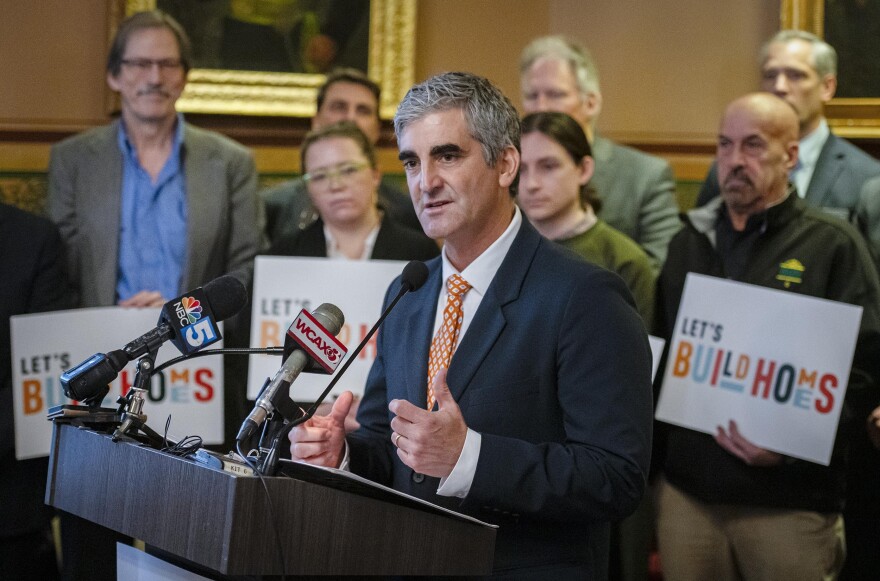This story, by Report for America corps member Carly Berlin, was produced through a partnership between VTDigger and ��������.
A marquee infrastructure financing program that’s meant to spur housing in smaller towns has passed a key hurdle in the Legislature �� but Gov. Phil Scott, senators and housing boosters say House lawmakers have added too many restrictions for the program to work.
“It’s just much too complicated for anyone to understand, and will not be utilized by small communities,�� Scott said at his regular Wednesday press conference. “It’s taking a step backwards.��
The initiative, called the Community and Housing Infrastructure Program, would allow municipalities or developers to borrow money for infrastructure like water lines, roads and sidewalks for a particular housing project �� and then use the increased tax revenue from the development to pay off the infrastructure debt.
Proponents say it provides a new avenue to pay for costly public infrastructure �� without the Legislature or municipalities needing to cut a check, or developers baking the cost into the price of housing.
Critics have argued the tax incentive’s benefits don’t outweigh the foregone property tax revenue to the state’s overstretched Education Fund. In that vein, the House Committee on Ways and Means placed a $40 million annual limit on the amount of tax increment dedicated to housing project debt before advancing the bill on Wednesday.
But housing advocates say that cap severely limits the number of homes that could be built through the program amid Vermont’s acute housing shortage.
“Why do we want to cap the ability to see that housing growth happen, especially if we’re using this program to incentivize it in smart-growth areas, whether that’s rural or urban?�� said Megan Sullivan, a lobbyist for the Vermont Chamber of Commerce.

The tax-writing panel also added a test that would occur as part of each housing project application to determine whether a project would not have occurred without financing from the program.
“There’s actually development happening all over the state,�� said Rep. Emilie Kornheiser, D-Brattleboro, who chairs the committee. “We want to make sure that we aren’t putting public dollars towards projects that would happen regardless.��
Yet CHIP’s proponents point out that Vermont is currently building less than half the homes needed annually in order to meet demand, ease housing vacancy rates and make progress on eliminating homelessness, based on .
House lawmakers also added a host of other rules to the program, including floor-area minimums for housing, location criteria, affordability incentives, and additional layers of oversight. Their version of the bill also sunsets Vermont’s existing tax-increment financing program in 2028, a move intended to assess its usefulness going forward, Kornheiser said.

Taken together, the CHIP’s proponents say the House’s direction curbs access to the program too severely.
“We would probably say they have put maybe so many guardrails in place that it keeps people out of being able to participate,�� said Sen. Kesha Ram Hinsdale, D-Chittenden Southeast.
The housing package that contains CHIP still needs to clear the House floor. After that, Ram Hinsdale said she expects the bill to ultimately land in a conference committee, where House and Senate lawmakers can hash out their differences of opinion.
“This is by far the most significant housing action in front of the Legislature this session,�� said Miro Weinberger, former Burlington mayor and executive chair of Let’s Build Homes, a new housing advocacy group that has thrown its weight behind the CHIP proposal. If lawmakers fumble the policy, he said, it “would just be a breathtaking legislative failure.��





